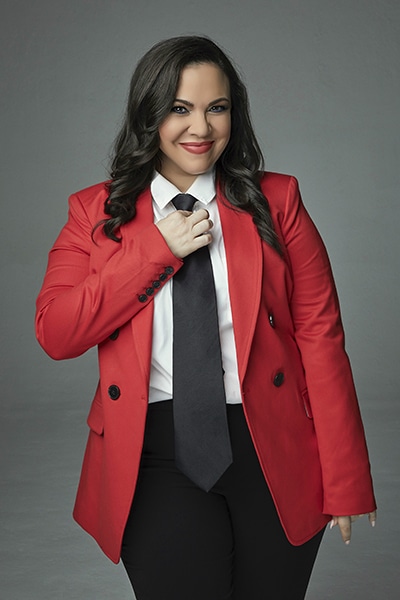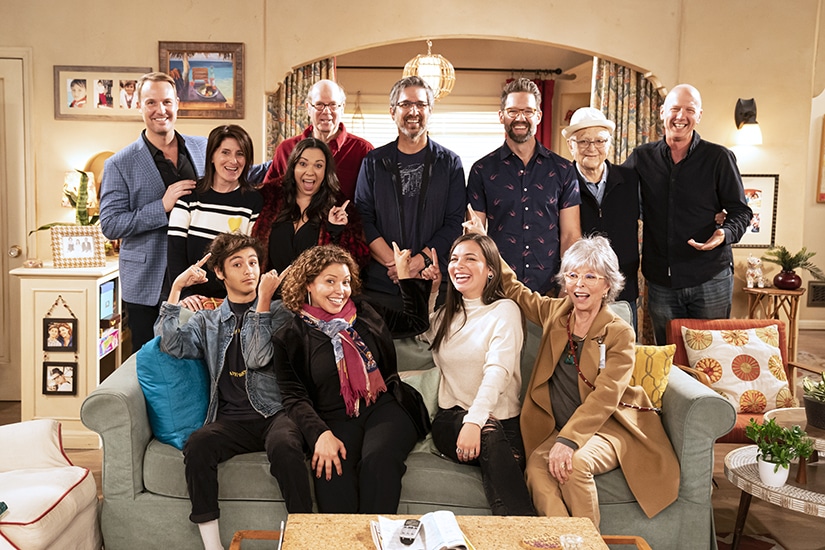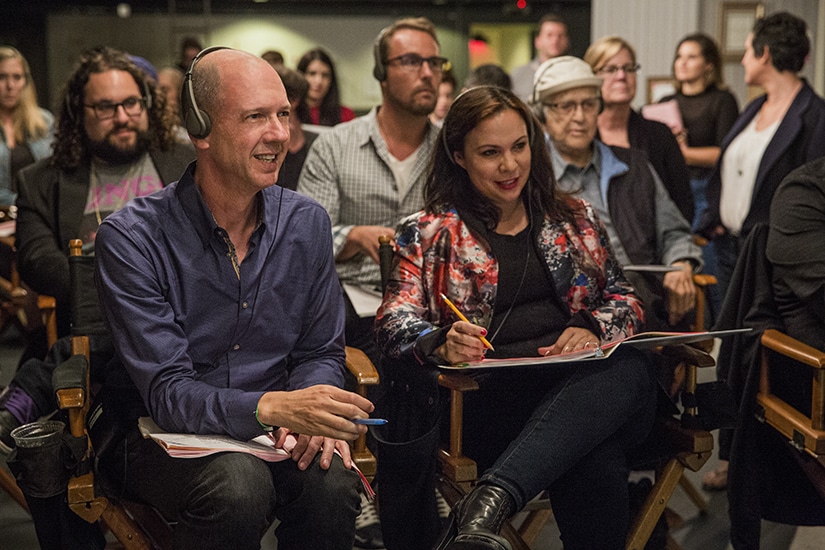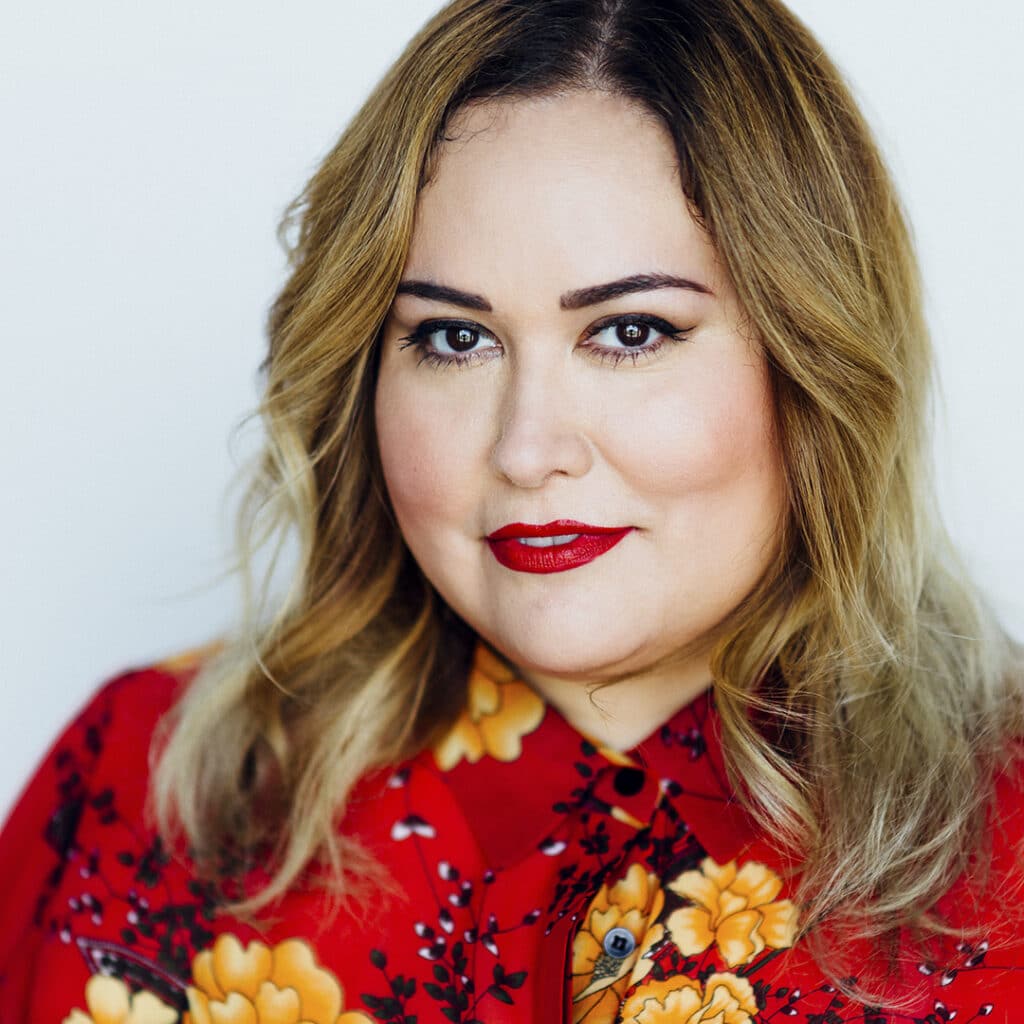|
Getting your Trinity Audio player ready...
|
As a kid, Gloria Calderón Kellett saw herself in whoever was on-screen. “When I was watching Pretty in Pink, I was Molly Ringwald,” Calderón Kellett says. “When I was watching the Seavers on Growing Pains, I was Tracey Gold.”
Eventually, she began noticing a disturbing pattern. No one who looked like her seemed to be on TV. Having spent her early years in the fairly monocultural state of Oregon, she was used to existing within a predominantly white culture—but one quirky moment in particular provided her the spark to work for change. “I would watch Miami Vice with my dad, and one night we saw there was going to be a character whose name was Calderón just like us. We were so excited. Then he turned out to be the drug dealer.”

The triumph of Calderón Kellett is two-fold. The actress-turned-writer, writer-turned-playwright, playwright-turned-showrunner-and-producer is responsible for some of the most groundbreaking Latino representation on television. It comes in the form of a reimagining of Norman Lear’s TV series One Day at a Time—with this version being told from the perspective of a Cuban American family.
The series is not Calderón Kellett’s first success in Hollywood, nor will it be her last. And it’s precisely her commitment to getting voices heard on the big and small screens that has laid the groundwork for more to follow her path.
You Aren’t Always What You See
Calderón Kellett was initially drawn to acting for the very reason she was confused by what she saw on television. “No one I knew existed in the world on-screen, but I knew we were there,” Calderón Kellett says. “That made me hunger for more stories about people that looked like me and the community I knew and loved.” The Hollywood of the 1990s, unfortunately, was well behind the curve.
Auditions fell into one of two camps. Calderón Kellett was never trying out to play the role of a doctor, hero, or teacher. “Every audition was either a gangbanger’s girlfriend or a gangbanger’s sister,” Calderón Kellett remembers. “It’s funny the first two or three times, but then you realize that this is it. This was the only thing I could get.”
And even those roles became hard to come by. Calderón Kellett was repeatedly told she sounded “too educated” or didn’t sound “Latino enough.” White casting agents and directors were explaining to a first-generation daughter of two Cuban immigrants who escaped the island during the mass exodus of Operation Pedro Pan that she was lacking in authenticity. The frustration boiled over and ultimately led Calderón Kellett to writing. She became conscious of the stark fact that those who crafted stories ultimately had a better chance of making a wider impact on culture at large.
Calderón Kellett would make the most of her decision. She was offered a “double-bump” increase in pay to take on writing responsibilities on The George Lopez Show, one of the few sitcoms on television depicting the lives of Latinos. At first, it seemed like money that was too good to pass up. But when Calderón Kellett was also presented with the opportunity to take a normal paying gig at a little upstart show called How I Met Your Mother, she deliberated. “I remember thinking that if I go to George Lopez, I’m going to be ‘the Latino writer’ for the rest of my career. If I go to How I Met Your Mother and do well, I will be a good writer who just happens to be Latino.”


A New Legacy
Calderón Kellett spent over a decade building out her experience in the very system that had long stifled Latino representation. Remarking on the development of her idea for the reboot of One Day at a Time with partner Mike Royce, Calderón Kellett says it was much more than just putting a Latino spin on an old idea. “I wanted to tell real stories about my family and things that actually happened,” Calderón Kellett says. “Some of it was cute, some of it was not. We talk about colorism in our community. We talk about LGBTQ acceptance. We talk about church and religion and all of those issues that are on the table, and how Latinos view them. I think the texture of the show feels real because it is real. A lot of this is ripped from our lives.” The series ran for three seasons on Netflix before being picked up for a fourth by Pop TV.
And Calderón Kellett is just beginning. In November 2019, she was tapped by Amazon to create and develop TV series and films for its streaming service via her own production company, GloNation. “I’m so excited because I feel like I’ve been watching so many of [Amazon’s] shows for so long,” Calderón Kellett says. She joins a growing list of female writers/creators like Phoebe Waller-Bridge (Fleabag) and Lena Waithe (The Chi) developing new and compelling properties for the streaming giant.
“[Amazon] seems like where the cool kids are right now,” Calderón Kellett says, laughing. “So, I’m really touched that when I met their team, everything they said was so in-line with the type of storytelling I want to do.” Though she might’ve been forced to work her way through difficult circumstances in a too often tone-deaf entertainment industry, in doing so Calderón Kellett has helped new stories, new faces, and new ideas find their way to screens all over the world.
Dream a Little Dream
Gloria Calderón Kellett wants to teach you how to make it. Literally. The showrunner, producer, and writer teamed up with YouTube and BuzzFeed to talk about everything from “TV Writing 101” to securing an agent to navigating Hollywood. “It’s my version of a master class,” Calderón Kellett says, laughing. “Except we did it all for free.” The class was conducted in hopes of reaching young people and educating them about how to roll up their sleeves as their careers evolve within the entertainment industry.

